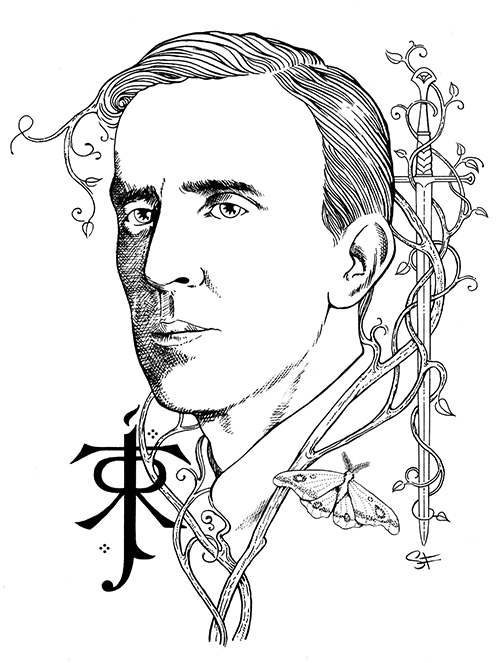

JRR TOLKIEN
(1892 – 1973)
For most of his adult life, John Ronald Reuel Tolkien taught English language and literature, specializing in Old and Middle English, at the Universities of Leeds (1920–25) and Oxford (1925–59). Often busy with academic duties, he managed to produce influential scholarly publications, notably a standard edition of Sir Gawain and the Green Knight (1925) and a landmark lecture on Beowulf (Beowulf: The Monsters and the Critics, 1936). Tolkien had completed a translation of Beowulf in 1926, and it was posthumously published, along with lectures he had given on the subject, and an original short story inspired by the legend, as “Beowulf: A Translation and Commentary” (2014).
In private, Tolkien amused himself by writing an elaborate series of fantasy tales, often dark and sorrowful, set in a world of his own creation. He made this “legendarium,” which eventually became The Silmarillion, partly to provide a setting in which “Elvish” languages he had invented could exist. While at Oxford, he wrote a number of stories, including most famously The Hobbit (1937) and The Lord of the Rings (1954–1955).
His tales of Arda and Middle-earth grew from a love for language and his desire to tell stories, influenced by a love of myths and legends, and his wife Edith.
After her death he recalled: “I never called Edith Luthien—but she was the source of the story that in time became the chief part of the Silmarillion. It was first conceived in a small woodland glade filled with hemlocks at Roos in Yorkshire (where I was for a brief time in command of an outpost of the Humber Garrison in 1917, and she was able to live with me for a while). In those days her hair was raven, her skin clear, her eyes brighter than you have ever seen them, and she could sing—and dance. But the story has gone crooked, and I am left alone, and I cannot plead before the inexorable Mandos.”
Background elements in color version include the first folio of the epic poem Beowulf, and a map of Middle-earth by Alan Lee.
